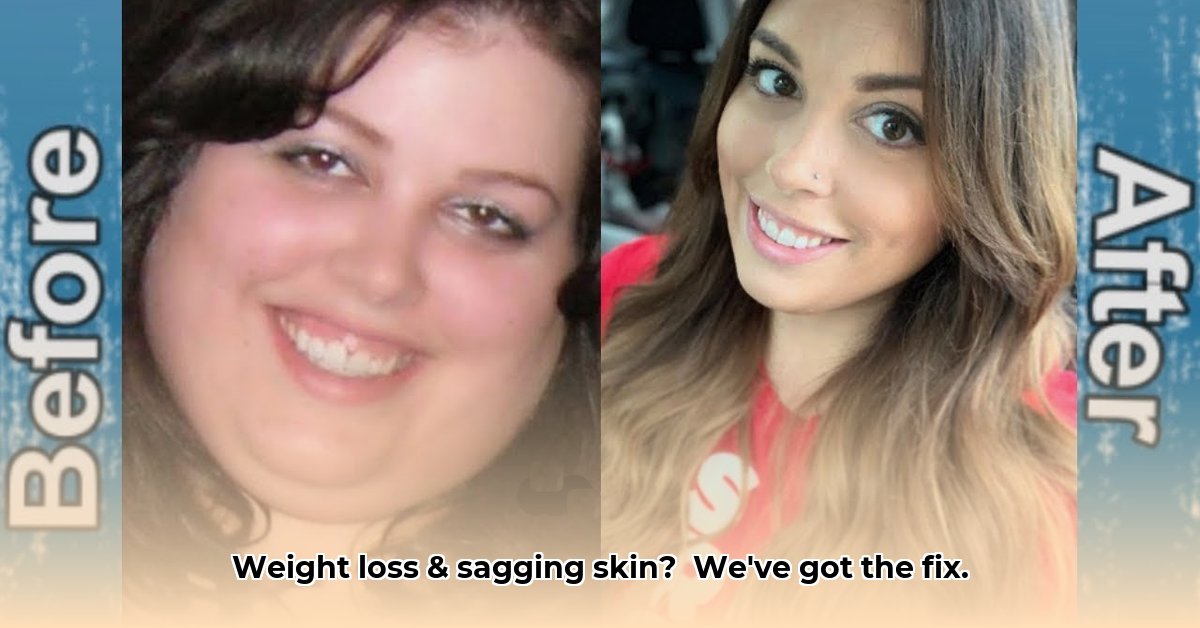
Understanding Facial Changes During Weight Loss
Losing a significant amount of weight (10-15% or more of your total body weight) often leads to noticeable changes in your facial appearance. This is primarily due to the reduction of subcutaneous fat—the fat layer directly beneath your skin's surface. As this fat diminishes, your underlying bone structure becomes more prominent, resulting in a leaner, more defined face. However, this process isn't always uniform; the elasticity of your skin plays a critical role in determining the overall outcome.
The Role of Skin Elasticity
Rapid weight loss can cause the skin to appear loose or saggy. This occurs because the skin doesn't always shrink at the same rate as the underlying fat. Think of it like a deflated balloon—the material remains stretched. Individuals with naturally less elastic skin, often those of older age, are more prone to this effect. Gradual weight loss allows the skin more time to adapt, minimizing sagging.
Individual Factors: Age and Genetics
The extent to which your face changes during weight loss depends heavily on individual factors, including age and genetics. Younger individuals with more elastic skin tend to experience less sagging than older individuals whose skin already has reduced elasticity. Genetic predisposition also plays a significant part in how your skin responds to weight fluctuations.
Strategies for Maintaining a Youthful Appearance During Weight Loss
To minimize sagging and maintain a healthy, vibrant facial appearance during your weight loss journey, a multi-faceted approach is recommended:
Lifestyle Strategies
Gradual Weight Loss: Aim for a slower, more sustainable rate of weight loss (1-2 pounds per week). This gentler approach provides your skin with adequate time to adapt to the changes in body composition. Rapid weight loss increases the risk of sagging.
Hydration: Drinking ample water (at least eight glasses daily) keeps your skin hydrated and plump, improving elasticity and resilience. Hydration is a fundamental aspect of maintaining healthy skin.
Sun Protection: Daily sunscreen application (SPF 30 or higher) is crucial to protect your skin from sun damage, which accelerates aging and worsens sagging. Consistent sunscreen use is a vital step in preventing premature aging.
Nourishing Skincare: A consistent skincare routine that incorporates ingredients like antioxidants and retinoids can boost collagen production, improving skin elasticity and reducing wrinkles. Consult a dermatologist for personalized recommendations.
Medical Interventions: When Lifestyle Changes Aren't Enough
For more pronounced sagging or wrinkles, medical interventions may be considered in consultation with a dermatologist or cosmetic surgeon. These options should be explored only after lifestyle modifications have been implemented.
Dermal Fillers: These injections add volume to areas that have lost fat, providing a fuller, smoother appearance. The effects are temporary and may require repeat treatments.
Laser Treatments: These treatments stimulate collagen production, improving skin tone and texture. Multiple sessions are usually necessary.
Comparing Medical Interventions
| Intervention | Advantages | Disadvantages |
|---|---|---|
| Dermal Fillers | Quick results, minimal downtime. | Temporary effects; repeat treatments are often needed; potential for side effects. |
| Laser Treatments | Improves skin tone and texture, addresses multiple concerns. | Can be expensive; some discomfort possible; multiple treatment sessions needed. |
It's crucial to have a thorough discussion with a qualified medical professional to determine the most suitable option for your specific needs and realistic expectations. The decision should be based on a comprehensive assessment of your individual circumstances.
Preventing Sagging Skin After Significant Weight Loss: A Comprehensive Guide
The most effective approach to preventing sagging skin after substantial weight loss involves a multi-pronged strategy that combines lifestyle modifications and, when necessary, medical interventions.
Understanding the Cause of Sagging Skin
Significant weight loss can leave skin looking loose because the underlying fat diminishes faster than the skin can retract. This is analogous to rapidly deflating a balloon; the material becomes wrinkled and less taut. This is a common concern, yet there are many ways to mitigate this outcome.
Actionable Steps to Prevent Sagging Skin
Gradual Weight Loss: Adopt a slow and steady weight loss approach (1-2 pounds weekly) to allow your skin sufficient time to adapt.
Strength Training: Incorporate strength training exercises to build and maintain underlying muscle mass, providing support to the skin and preventing sagging. Focus on exercises that engage all major muscle groups.
Hydration: Maintain optimal hydration levels by drinking at least eight glasses of water daily.
Nutrient-Rich Diet: Consume a diet abundant in protein, vitamins C and E, and omega-3 fatty acids, which are crucial for collagen production and maintaining skin elasticity.
Sun Protection: Always apply a broad-spectrum sunscreen with an SPF of 30 or higher to protect your skin from sun damage, a major contributor to premature aging and sagging.
Consider Medical Treatments: For more significant sagging, discuss non-invasive options (radiofrequency, ultrasound) or surgical procedures with a dermatologist or plastic surgeon.
Evaluating Treatment Options
| Treatment Type | Pros | Cons |
|---|---|---|
| Radiofrequency/Ultrasound | Non-invasive, relatively low risk, improves skin texture and tone | Multiple sessions needed; results may vary |
| Laser Skin Tightening | Can be more effective than radiofrequency for some; quicker results | Potential for side effects (hyperpigmentation); more expensive |
| Surgical Body Contouring (e.g., Abdominoplasty) | Dramatic results, removes excess skin | Invasive; higher risk; longer recovery time; expensive |
Remember, individual results may vary significantly. A holistic approach, prioritizing healthy lifestyle choices, forms the bedrock of preventing sagging skin after weight loss. Medical interventions should be considered as supplementary strategies only in consultation with a qualified medical professional.